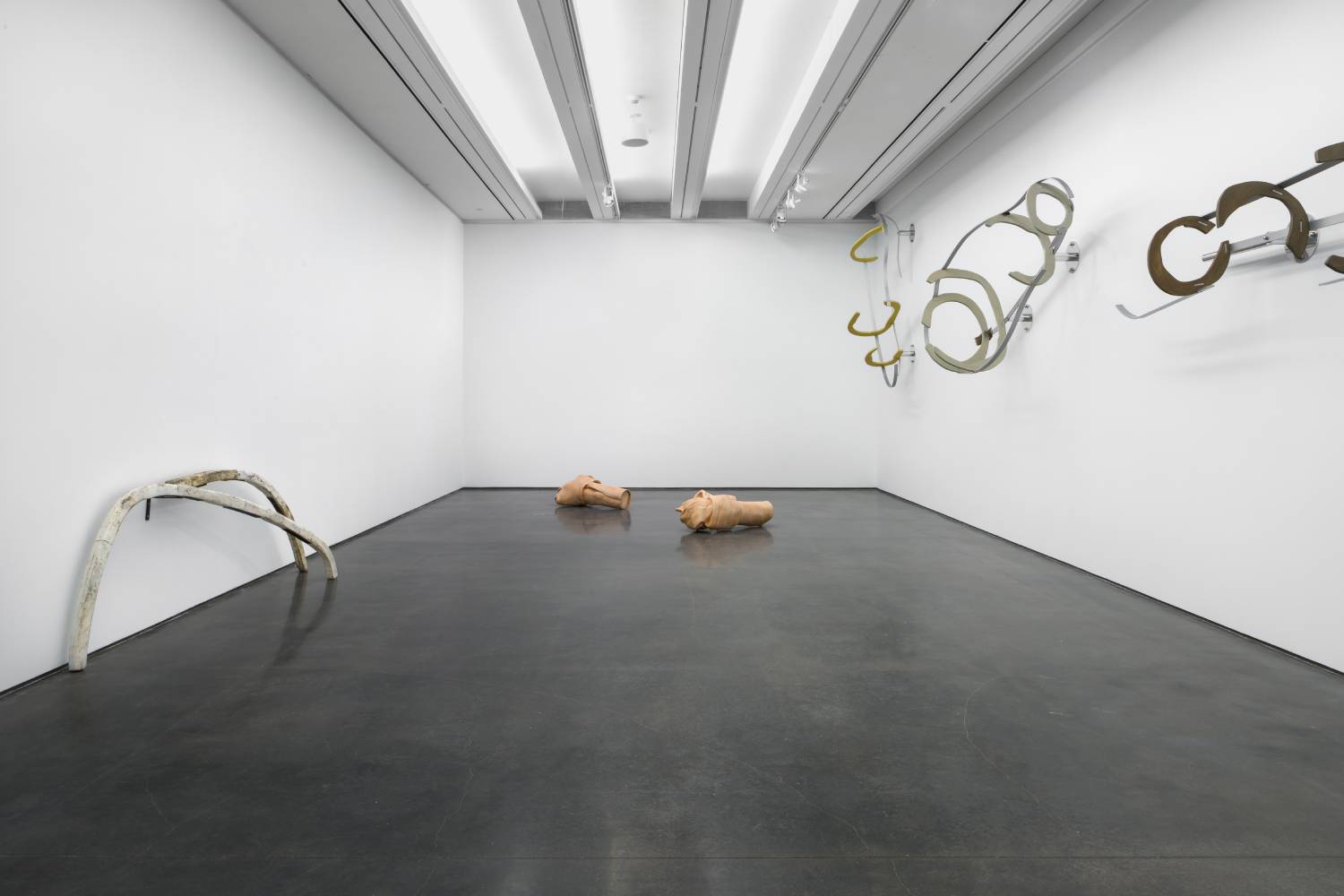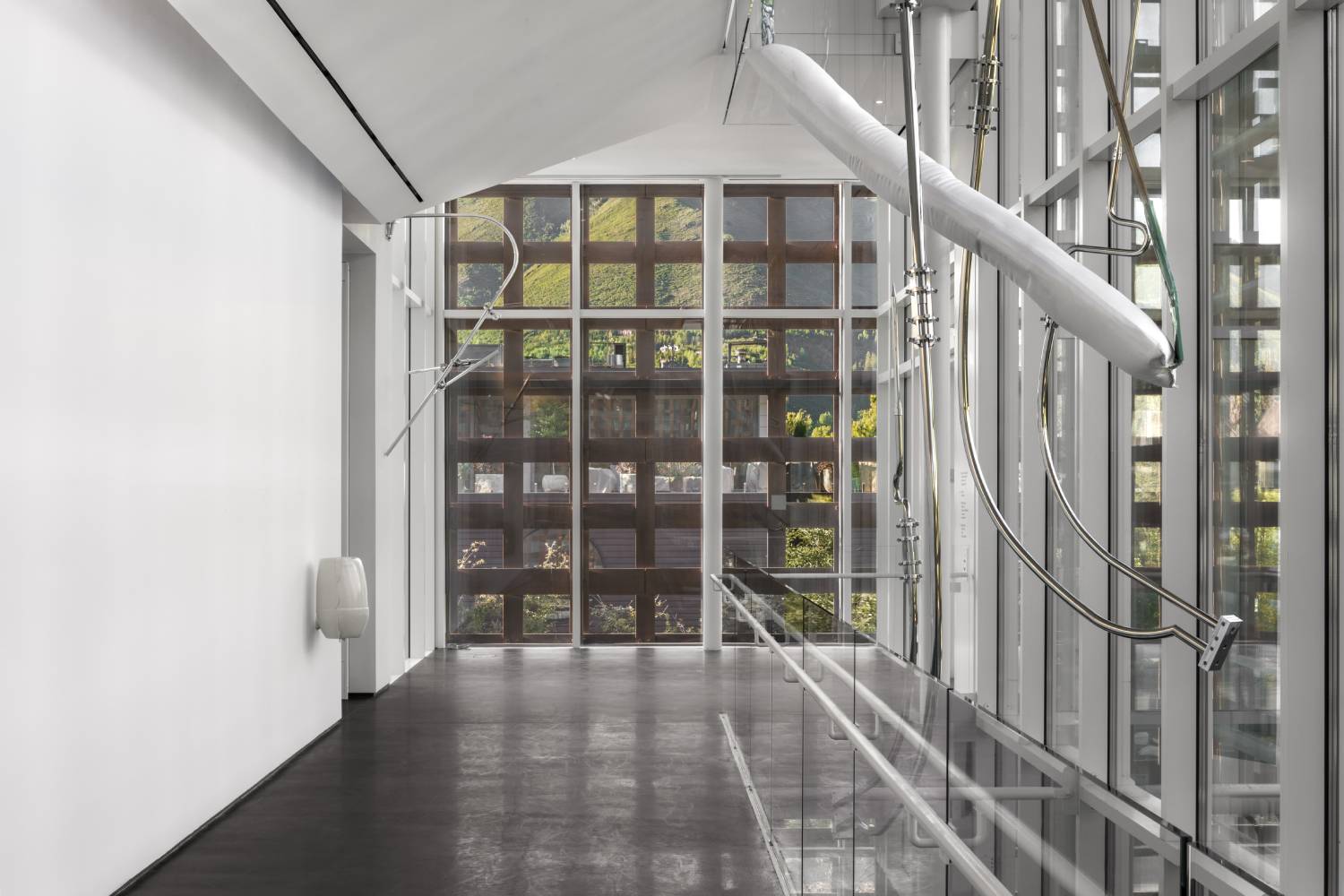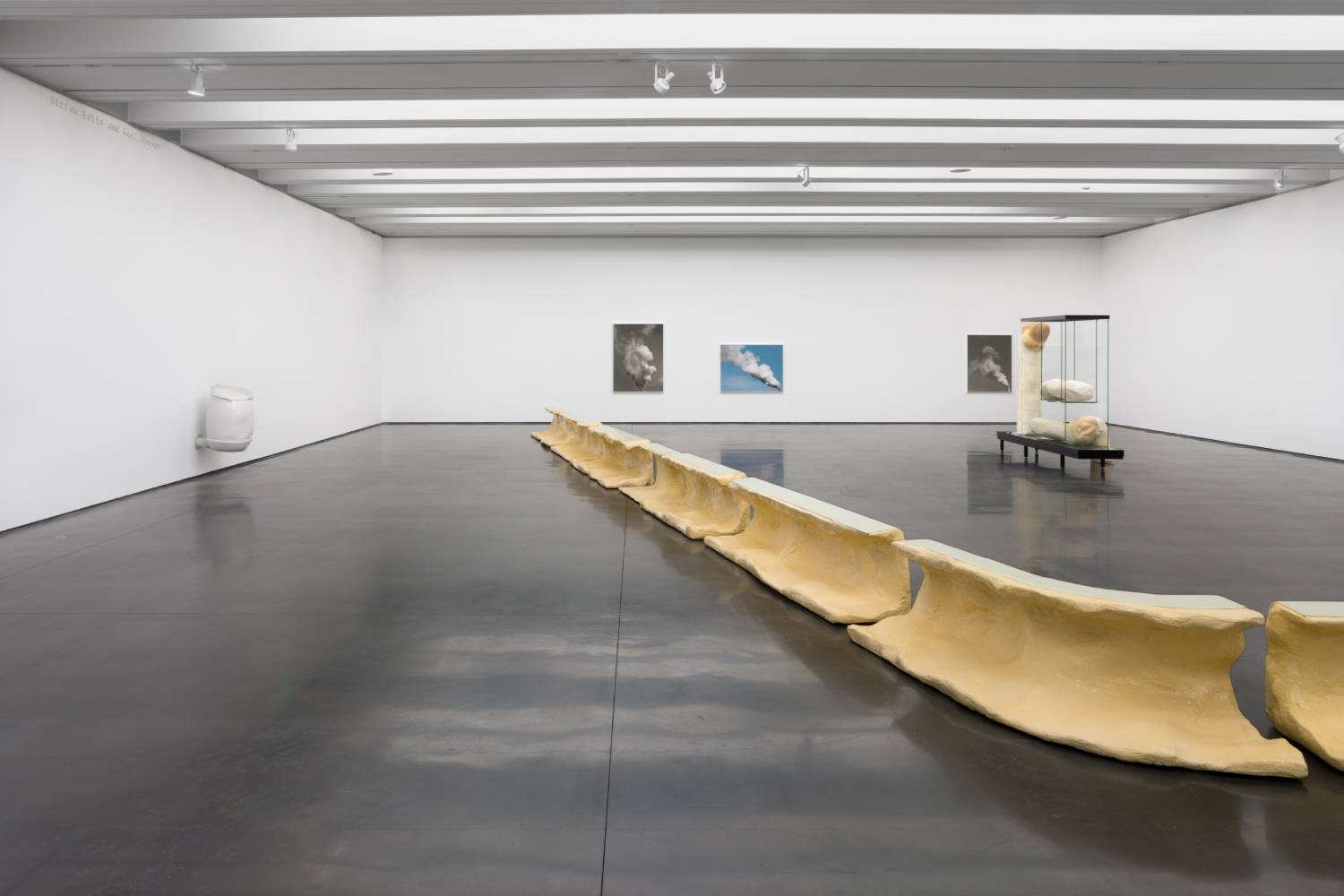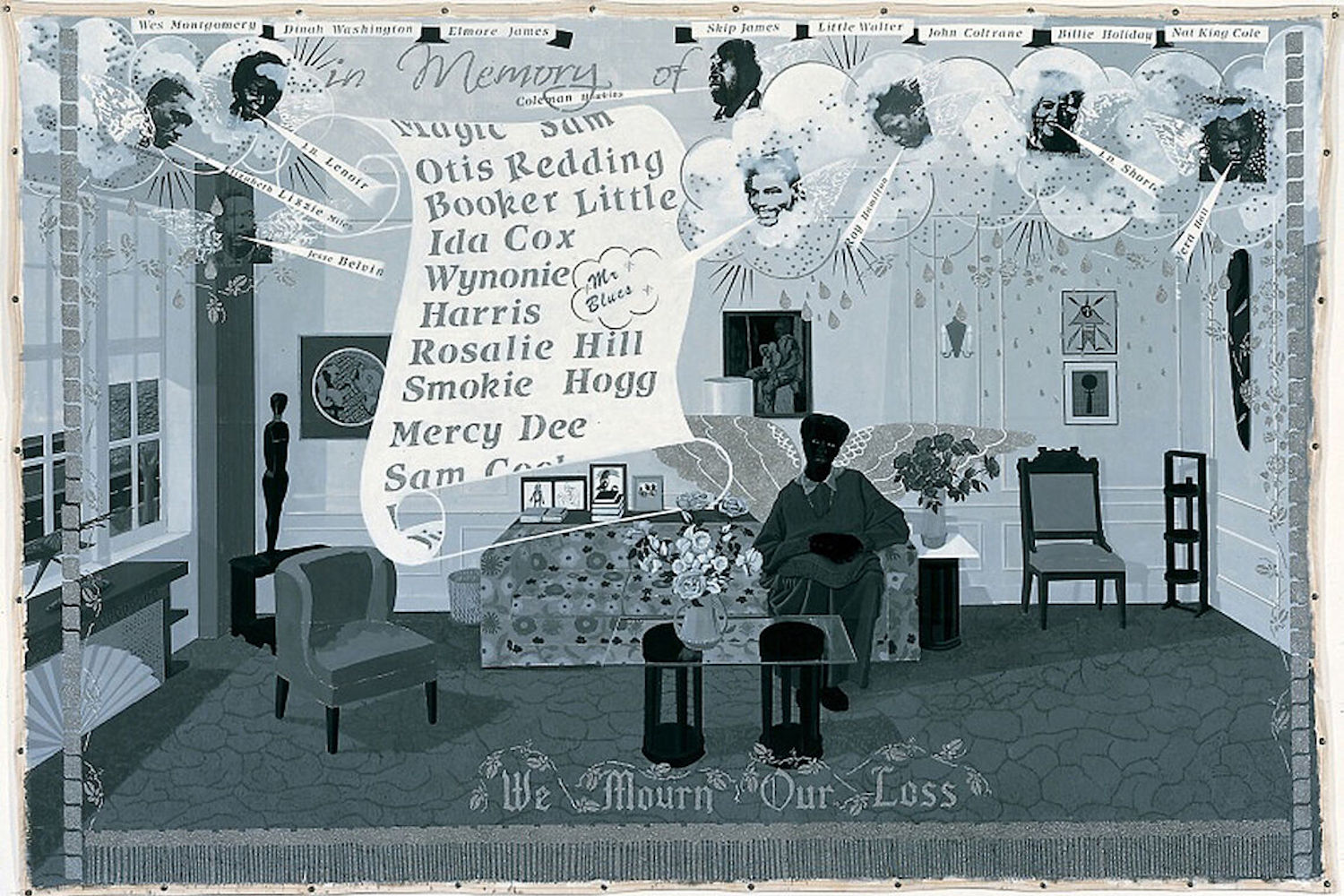During my first visit to Nairy Baghramian’s survey “Jupon de Corps,” at the Aspen Art Museum, I felt privy to the show on a most intimate level, experiencing it as a minefield of physiological triggers within myself: the dull bone of French Curve (2014) — a line of sculptures in lacquer, aluminum, and resin, stretching like a line of traffic barriers long enough to block a busy street, with a surface sheen of teeth along the lower jaw — sparked a dim physical echo of the recent root canal that my gums were still adjusting to. The blocklike pieces of the work, titled after the flat tool used for drawing a perfect arc, impose order and limit movement within the room they divide; any sudden bend or turn evokes the articulation of vertebrae.
While the works resist recognizable figuration, they house, or at least reserve the room to host, an undeniable body within them. Some are carved out of the negative spaces of support structures. Body-cast-like works Headgear, Scruff of the Neck (Stopgap), Scruff of the Neck (UL 12/13), Chin Up (First Fitting A), and Chin Up (First Fitting C) (all 2016) each resemble a faint exoskeleton stripped of its flesh and pinned to the wall for further inspection, or an arch bar carefully retained and removed from a wired-shut jaw. On the floor, Treat (Marrowbone) (2016), a cross section of an oversized pink bone, brings cartoonish humor and lightness to a nightmarish realm of gigantic, looming medical utensils. My foot recoiled in pain as I hobbled away slowly from these threatening metal instruments and “funny bones.” (I would learn later that day that the pangs I could no longer ignore were coming from a metatarsal I had managed to fracture on the brief walk to the museum that morning; it hurt a little more among the works on the first floor than the second; my X-ray later that day looked like my own gag addition to the exhibition guide I’d picked up on my way in.) Together with the photograph The Pincher (2017) hanging upstairs, an elegantly crude cluster of heavy, smooth, metal-hued shapes laid out to resemble a set of pliers, these artworks recall a set of ominous surgical tools from another time.
Heading back down to the first-floor entrance, Gorge (triple bend) (2017) offered the succinct, square reassurance of an emergency firehose encased in its breakable glass. Baghramian’s version, squished into its familiar polished frame, is made of foam, silicon, and fabric tubing in muted colors. The work offers an uncanny discomfort, resembling an X-ray of a rearranged abdomen — perhaps stuffed, or engorged, as its title implies — with its illuminator unplugged. Backing away slowly from Gorge leads to an encounter with multiple conspiratorial clusters, or “groupings” as Baghramian prefers, of works from the “Maintainer” series for which she is perhaps best known. Elegant planes and joints in aluminum, cork, and wax, all in subdued shades and reserved sheens, hold each other up and let each other down in repose. They are held together as delicately and emphatically as the bones and cartilage in a ballerina’s limbs flexing onstage. Like many of Baghramian’s works, this ballerina is straining to keep it together below her thin skin, folding her vulnerability behind a tight, knowing smile. Each Maintainer is a sculpture turned inside out, showing the seams and joinery and glue that is normally hidden on the inside of a construction. As with the oxygen-tank-like Breath Holding Spell (2018) works tucked in the corners of the room, they function the way a crutch might make a body feel and act more like itself.
Lines of surgical steel; exposed, luminous bones; soft skins; and a sense of postural discomfort are tied up in Jupon Réassemblé (2016), a spider-like contortion of an aging and aching frame, a little scuffed up and a little bent. Referring back to the exhibition’s title — jupon is French for petticoat — the work appears to find rest in its self-acceptance, a gesture that mirrors to me that I not only have a body, I am a body.






